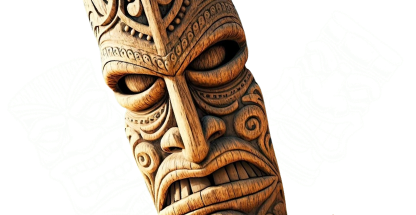The meaning of tiki totem poles can vary significantly across different cultures. These fascinating and intricately carved structures hold deep symbolic significance for many indigenous communities around the world. The tiki totem pole is a significant object with various meanings, found in Polynesia and North America.

Polynesian cultures consider tiki totem poles sacred and believe they play a vital role in their religious beliefs. People believe that gods or ancestors inhabit these magnificent structures and protect and guide their communities. The carvings on the totem pole show gods or spirits, and the pole tells a story or shares a cultural message.
Similarly, in Native American cultures, tiki totem poles hold immense spiritual and cultural significance. The tribe carefully crafts these majestic wooden sculptures to honor the spirits and ancestors. The totem pole shows animals and mythical creatures that represent their beliefs and traditions. It tells a story about their community's past, present, and future.
In addition to their spiritual importance, tiki totem poles also serve as visual representations of cultural identity and heritage. Totem poles are important symbols of culture in communities, helping them keep and honor their special traditions. Big buildings remind people of their past, traditions, and beliefs, making them feel proud and connected to each other.
Furthermore, tiki totem poles often serve practical purposes within their respective cultures. These towering sculptures can serve as territorial markers, helping identify the boundaries of a community or tribe. The carvings and symbols on the poles convey legends, events, or lessons to future generations. You can use them as storytelling tools.
Overall, the meaning of tiki totem poles transcends cultural boundaries and encompasses a wide range of symbolic interpretations. These amazing structures are important to many communities around the world. They can represent gods, ancestors, or cultural identity.
Tiki statues have become synonymous with island vibes and tropical getaways. Many different cultures have these carved wooden figures, each with their own unique meanings and significance. In this article, we will explore the history and symbolism of tiki totems in various cultures.
Tiki totems have a rich history and cultural significance that spans across various cultures. These carved wooden figures, often associated with island vibes and tropical getaways, hold deep spiritual and ancestral meanings.
This piece delves into the past and importance of tiki totems across various cultures. It investigates their ties to deities, forefathers, and spiritual rituals. To understand the importance of these statues, it is crucial to know their origins in Polynesia.
Knowing Hawaii's religious beliefs and their connection to Maori and cultural artifacts. Lastly, it is also important to be familiar with the famous moai sculptures of Easter Island. So, let's set off on an expedition to uncover the intriguing realm of tiki totems worldwide throughout different cultures.
Polynesian Culture
People find these intricately carved wooden sculptures throughout the islands of Polynesia, including Hawaii, Tahiti, and New Zealand.
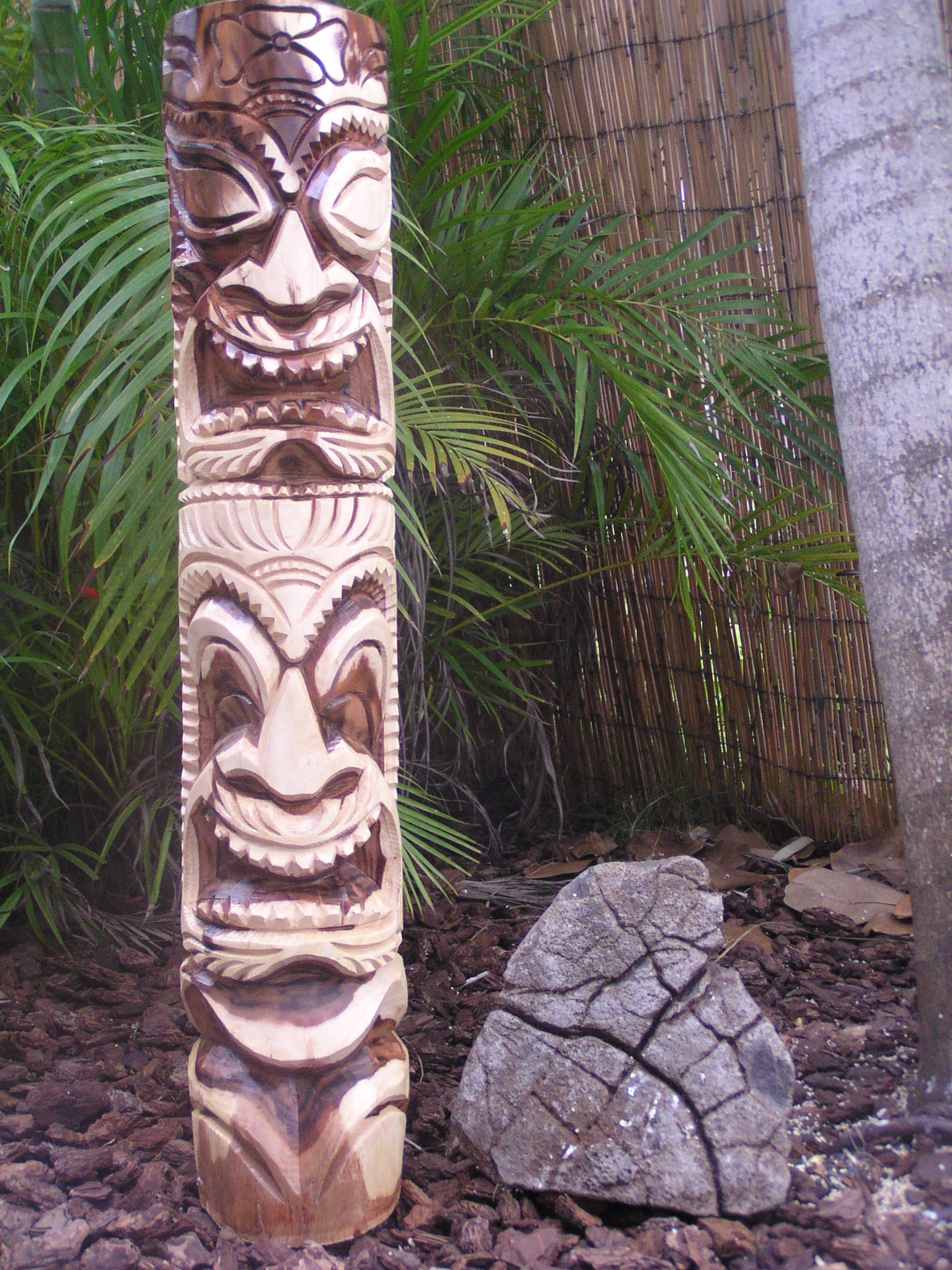
People think they have spiritual power and often put them in special places like temples, marae, and homes.
Every design element, like arm position, facial expressions, and wood patterns, has its own meaning.
Carvers use old tools like adzes and chisels to shape wood, which can take weeks or months to finish.
Tiki totem poles are important culturally and artistically, and they are also popular symbols of Polynesian culture worldwide. Tropical themes, tiki bars, and Hawaiian-themed parties often associate them. It's important to understand and respect the cultural and spiritual meaning of these totem poles for Polynesian people. They are important objects that represent the history and beliefs of Polynesian culture, not just decorations.
Artisans often carve these statues from wood or stone and adorn them with intricate designs and symbols.
Hawaiian Culture
In Hawaiian culture, people call tiki statues ki'i and believe that they are gods in physical form. People often find these statues in temples and use them in religious ceremonies. People also see them as protectors and place them outside of homes and businesses to ward off evil spirits.
Tiki totem poles hold significant cultural and spiritual meaning in Hawaii. These detailed wooden sculptures are important in Hawaiian art and have strong connections to the island's history and mythology.
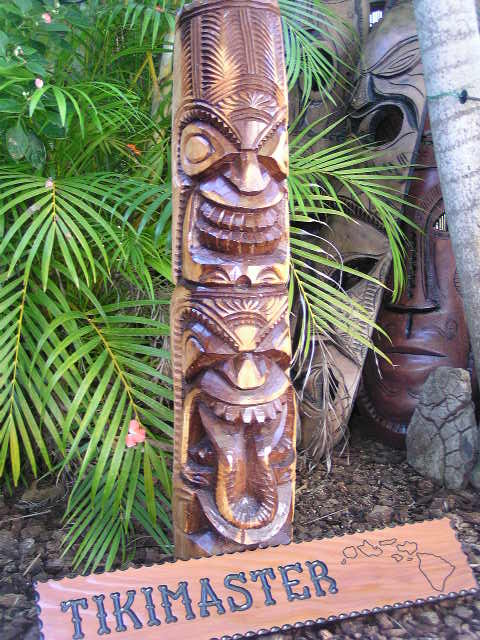
In Maori stories, "Tiki" refers to the first man. In Hawaiian traditions, people believe that totem poles represent various gods and spirits. Each tiki symbolizes its own meaning and connects to various aspects of life, such as fertility, safety, and wealth.
Tiki totem poles were sacred and put in temples, burial grounds, and homes. People believed that they connected the spiritual and physical worlds, serving as intermediaries between humans and gods.
The intricate carvings on tiki totem poles often depict various mythological figures and symbols. These carvings are not only aesthetically pleasing but also convey important cultural and historical narratives. The designs can show important things in Hawaiian mythology like spirits, animals, plants, and celestial bodies.
Carvers use wood from special Hawaiian trees like koa or milo, which are important in Hawaiian culture.
Tiki poles hold great importance in Hawaiian culture, and people can see them in parks, resorts, and cultural centers. They remind Hawaiians of their cultural heritage and help them stay connected to their ancestors and traditions.
In addition to their cultural significance, tiki totem poles have also become popular tourist attractions. Tourists in Hawaii frequently visit these sculptures to learn about the local culture. They also admire the detailed craftsmanship involved in making them.
Hawaiian symbols show spirituality, history, and mythology. They connect to the past and celebrate the islands' cultural heritage.
Maori Culture
The Maori people of New Zealand also have a strong connection to tiki totems. In Maori culture, people know the statues called tekoteko as the moai statue of Easter Island. People believe that they represent ancestors and deities. They often place them at the entrance of a marae (sacred meeting place) to protect and guide those who enter.
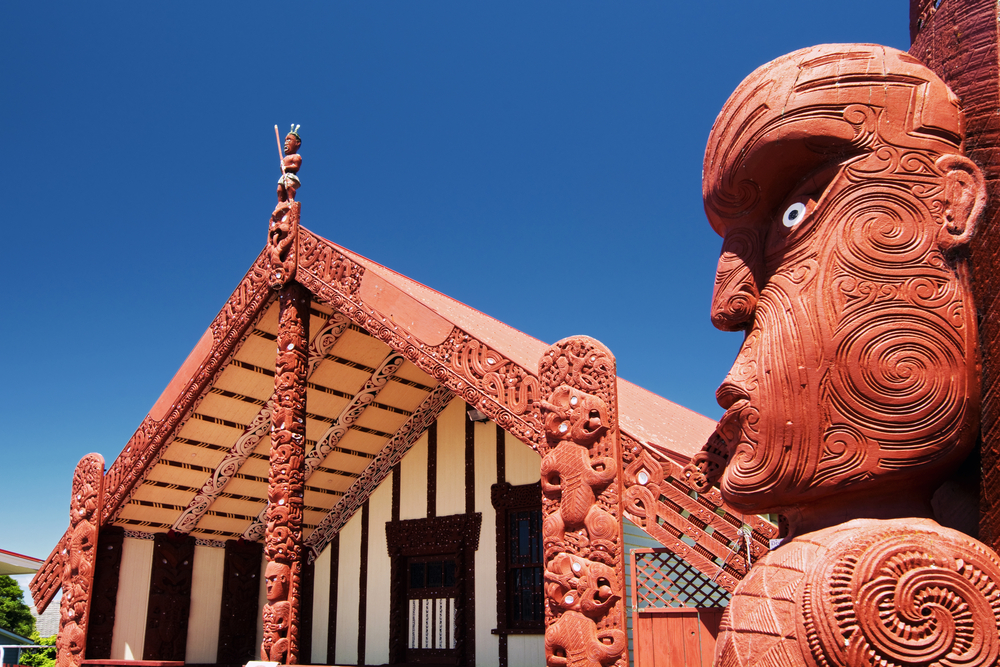
Easter Island Culture
Easter Island showcases perhaps the most famous use of tiki totems. The Rapa Nui people carved these massive statues, known as moai, and believe they represent their ancestors.
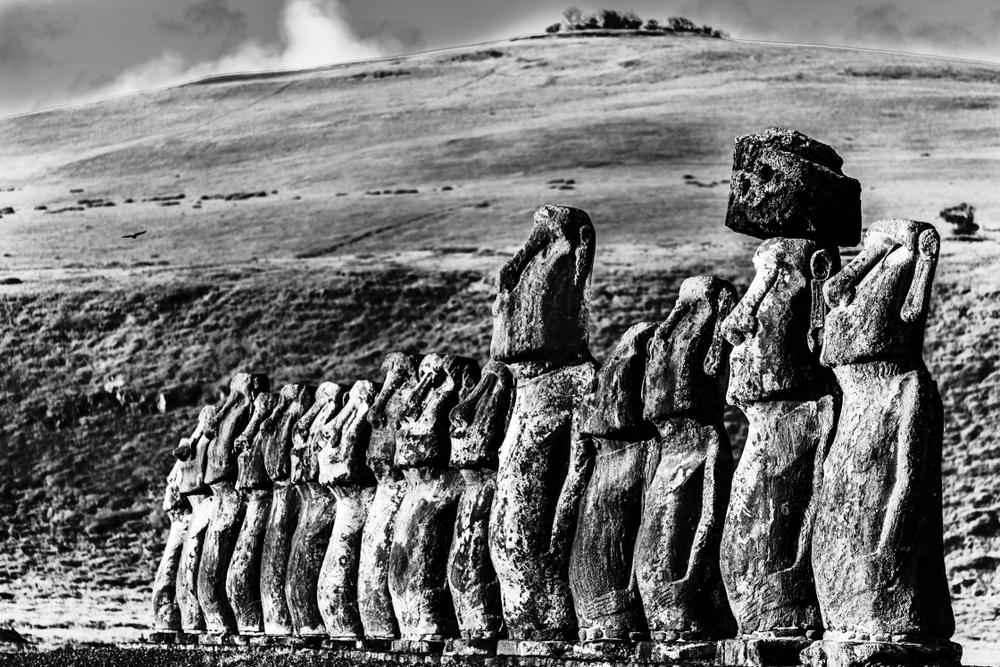
We are unsure about the purpose of the statues. However, it is possible that people used them for religious ceremonies. Additionally, they may have been created to honor their ancestors.
Modern Culture
In modern times, tiki totems have become a popular symbol of island vibes and tropical vacations. You can find them in many tiki bars and restaurants, as well as in home decor. It's important to respect and understand that these statues have cultural meaning beyond being decorative.
American Indian Culture
American Indian culture does not traditionally use or associate tiki totems with their culture. Polynesian, Hawaiian, Maori, and Easter Island cultures primarily find Tiki totems.
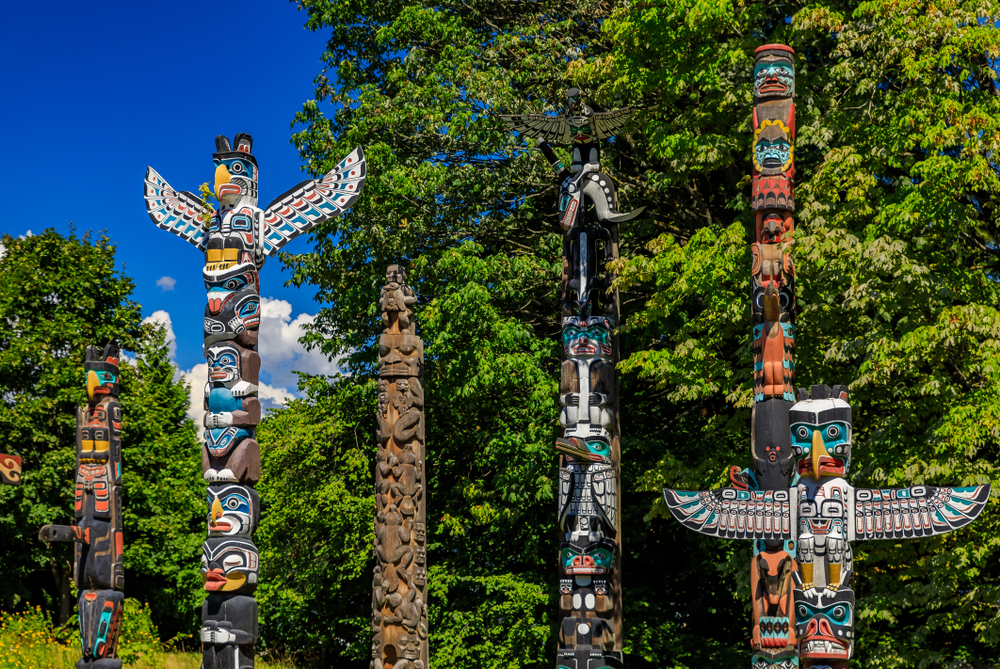
However, American Indian cultures have their own unique totems and symbols that hold deep spiritual and cultural significance. Totems differ in tribes and can symbolize animals, nature, ancestors, or spiritual beings. We must respect and understand the cultural meanings and importance of totems in each Native American tribe.
Alaskan Culture
I can provide information about the history and significance of totem poles in Alaska. These details are not mentioned in the article.
Indigenous people in the Pacific Northwest Coast carve tall wooden sculptures called totem poles. People traditionally make these poles from cedar trees and intricately carve them with various symbols and figures. They serve as a form of storytelling, depicting family histories, legends, and cultural beliefs.

In Alaska, totem poles have been an important part of the indigenous cultures for centuries. They often appear in front of homes, community buildings, and ceremonial sites. Each totem pole tells a unique story about a family or group's history, achievements, and beliefs.
The symbols and figures carved on totem poles have specific meanings. Animals such as bears, eagles, and wolves represent different qualities and characteristics. For example, a bear may symbolize strength and protection, while an eagle may represent wisdom and spirituality. Other symbols can include human figures, mythical creatures, and natural elements.
Totem poles are not just decorative objects; they hold deep cultural and spiritual significance. People consider them sacred and use them in ceremonies, potlatches, and other important events. Totem poles help indigenous communities keep and share their cultural heritage with future generations.
To learn about totem poles in Alaska, visit museums, cultural centers, and heritage sites that display these amazing artworks.
The Meaning of Tiki Totems
Overall, tiki totems hold a strong connection to spirituality and ancestry in many different cultures. People see them as a way to connect with the gods and honor those who came before us. In today's culture, they represent relaxation and holidays, but it's crucial to honor and understand their history and significance.
Where to Find Tiki Statues
If you are interested in incorporating tiki totems into your home decor, there are many places to find them. You can visit local tiki shops or markets, or even find them online. Research and buy from a trusted source that values the cultural importance of these statues. Tikimaster.com happens to have the largest inventory of tiki statues right here in Kailua, Oahu.
In Conclusion
Tiki totems hold a rich history and meaning in various cultures around the world. Statues from Polynesia to Easter Island connect with the spiritual world and honor ancestors for many years. As they become more popular in modern culture, it is important to understand and respect their origins and significance. When you see a tiki statue, think about its cultural significance or contact Tikimaster for more information.


